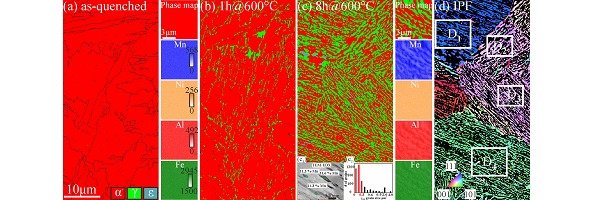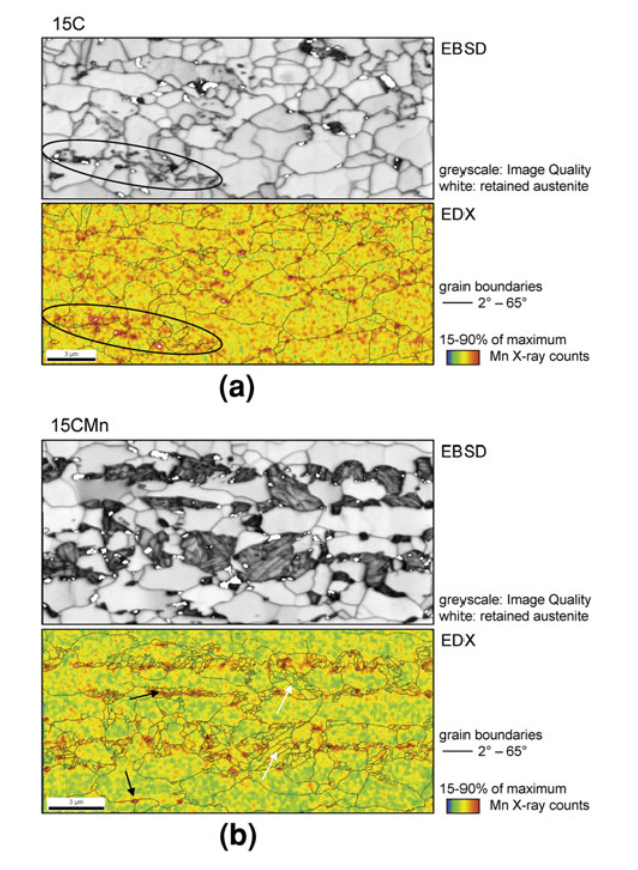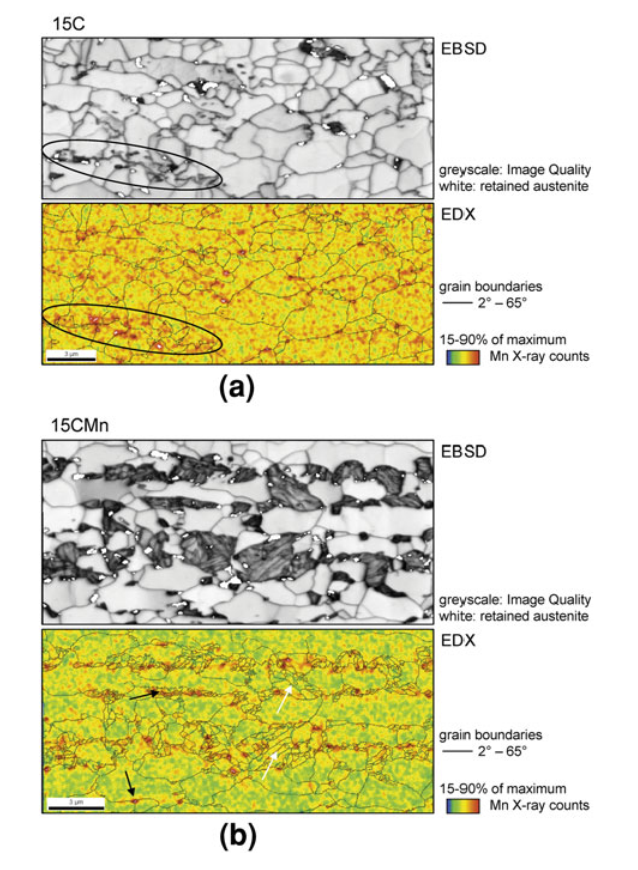
Effect of Manganese on Grain Size Stability and Hardenability in Ultrafine-Grained Dual-Phase Steels
For this project two plain carbon steels with varying manganese content (0.87 wt pct and 1.63 wt pct) were refined to approximately 1 um by large strain warm deformation and subsequently subjected to intercritical annealing to produce an ultrafine grained ferrite/martensite dual-phase steel. The influence of the Mn content on microstructure evolution is studied by scanning electron microscopy (SEM).
The Mn distribution in ferrite and martensite is analyzed by high-resolution electron backscatter diffraction (EBSD) combined with energy dispersive X-ray spectroscopy (EDX). The experimental findings are supported by the calculated phase diagrams, equilibrium phase compositions, and the estimated diffusion distances using Thermo-Calc (Thermo-Calc Software, McMurray, PA) and Dictra (Thermo-Calc Software). Mn substantially enhances the grain size stability during intercritical annealing and the ability of austenite to undergo martensitic phase transformation. The first observation is explained in terms of the alteration of the phase transformation temperatures and the grain boundary mobility, while the second is a result of the Mn enrichment in cementite during large strain warm deformation, which is inherited by the newly formed austenite and increases its hardenability. The latter is the main reason why the ultrafine-grained material exhibits a hardenability that is comparable with the hardenability of the coarse-grained reference material.

Fig: High-resolution electron backscatter diffraction (EBSD) scans combined with energy dispersive X-ray spectroscopy (EDX) analysis of the 15C (a) and the 15CMn steel (b). The grayscale images show the Image Quality maps. The position of retained austenite is superimposed in white. The EDX maps are normalized for 15–19 pct of the maximum EDX counts for better visualization of the Mn distribution. Rolling direction is horizontal, and normal direction is vertical.
